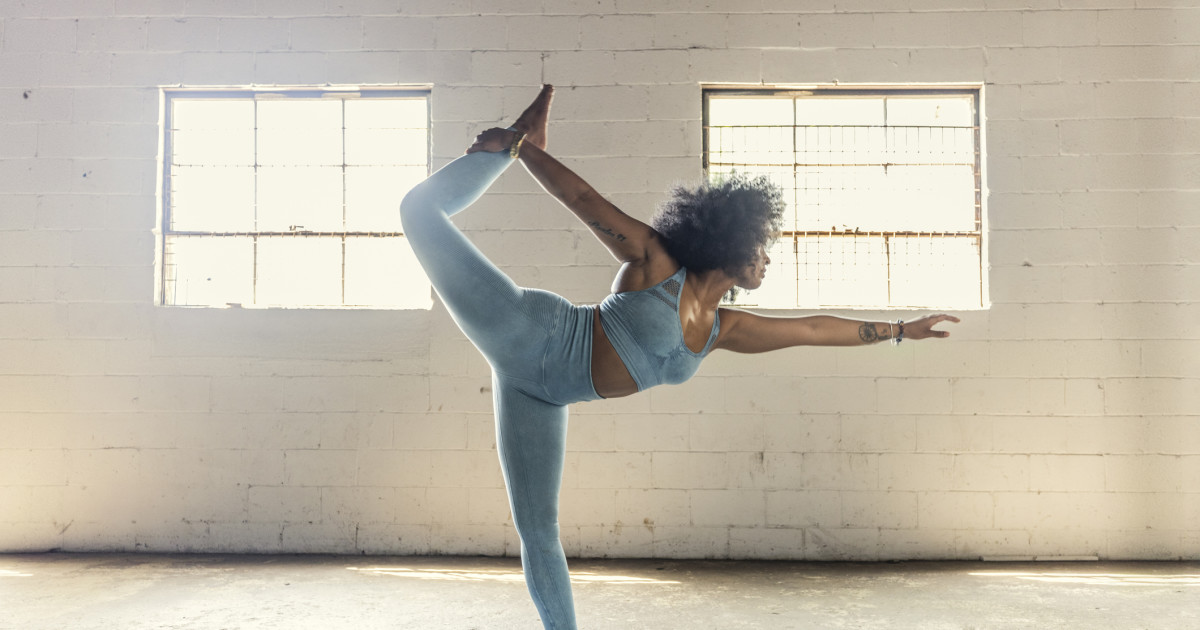Copyright Parade

Key Points Yoga benefits flexibility, balance, heart health and stress reduction, especially after age 40. Experts recommend supplementing yoga with resistance and cardio exercises for optimal fitness after 40. Strength training and cardio help maintain muscle, bone health and overall well-being as you age. Yoga is a popular and rejuvenating workout that offers countless mental and physical health benefits. After a long day’s work, it serves as a stellar stress-reducer. Stretching it out in poses like downward dog, cobra and warrior III keeps you strong, flexible and balanced. It’s great for heart health and easy on the joints, making it an excellent choice for any fitness level and those dealing with arthritis. But is practicing yoga enough on its own to keep you fit after 40? “Yoga offers a unique blend of static and dynamic stretching, breath awareness and muscular engagement that provides flexibility as we age,” explains Louise Bartlett, senior yoga and menopause yoga teacher. “A consistent, mindful yoga practice doesn’t just increase range of motion, it creates space in the body for movement, space for emotional release and space to feel grounded in our own body—something we all need as we age.” If you’re looking to optimize your fitness routine after 40, we’re here to spill the tea on everything to know—and exactly how to format your yoga practice. 🩺SIGN UP for Parade’s health newsletter with expert-approved tips, healthy eats, exercises, news & more to help you stay healthy & feel your best self💊 Can You Stay Fit by Just Doing Yoga After 40? If your goal is to stay in great shape after 40, a consistent yoga routine is a great “foundation,” as Meagan Kong, CPT, head of fitness at AlterMe, puts it. It helps you stay balanced and mobile, lowering your risk of injury and promoting better quality of movement—all important qualities to focus on with age. But is yoga enough by itself? Experts agree this workout modality is spectacular, but it will not sculpt a ton of lean muscle or help you accomplish major cardio goals. “To truly stimulate the muscle hypertrophy and osteogenic loading (bone-building stress) needed as we age, you’ll want to include resistance training—like lifting weights or using resistance bands—alongside your yoga practice,” Kong says. “That combination gives you the best of both worlds: strength, stability, flexibility and protection against age-related muscle and bone loss.” Strength training is essential for your overall well-being, as you naturally lose 3% to 8% of lean muscle every decade after 30. Related: This Nighttime Yoga Flow Works Better Than Melatonin How To Enhance Your Yoga Routine for Best Results After 40 Choose challenging yoga classes Opt for challenging yoga classes such as vinyasa or power several times a week in order to maximize results. Echo Wang, certified yoga teacher and founder of Yoga Kawa, also recommends weaving in yin or hatha for recovery. Slower classes like these are stellar for beginners or those who aren’t yet super flexible. Related: Take a Deep Breath In, Now Release—and Find Inner Peace With These 105 Yoga Quotes Do bodyweight exercises Perform bodyweight exercises like squats, lunges and pushups once or twice a week. Wang says this will help strengthen your bones and muscles. “The most important factor is finding a style you can practice consistently and that feels good to your body,” Wang notes. Add resistance equipment like dumbbells and bands to your workouts. This will give you an extra leg up. “The biggest gap is load, since yoga rarely involves enough resistance to maintain muscle and bone mass long-term. Even light weights or resistance bands can make a huge difference,” Kong stresses. Related: The 5 Very Best Yoga Workouts On YouTube Sprinkle in some cardio Perform regular cardio exercise, whether you head out for a brisk walk or run, swim some laps in the pool or hit the trails with your bike. Cardio is another key part of the equation in this stage of life. “While yoga gets your heart rate up in bursts, consistent cardio work supports long-term heart function,” Kong says. “I love blending yoga with mobility flows, brisk walks and structured strength sessions.” The bottom line? Keep doing your yoga. It’s chock-full of goodness for your mental and physical wellness. After 40, it’s crucial to also blend in regular cardio and strength training to the mix, as losing muscle mass is a fact of life in this phase of the game. Up Next: Sources: Moonaz, S. H., Bingham III, C. O., Wissow, L., Bartlett, S. J., … & Clifton, O. B. (2015). Yoga in sedentary adults with arthritis: Effects of a randomized controlled pragmatic trial. The Journal of Rheumatology, 42(7), 1194-1202. Louise Bartlett, senior yoga and menopause yoga teacher Meagan Kong, CPT, head of fitness at AlterMe Volpi, E., Nazemi, R., & Fujita, S. (2004). Muscle tissue changes with aging. Current Opinion in Clinical Nutrition & Metabolic Care, 7(4), 405-410. Echo Wang, certified yoga teacher and founder of Yoga Kawa



